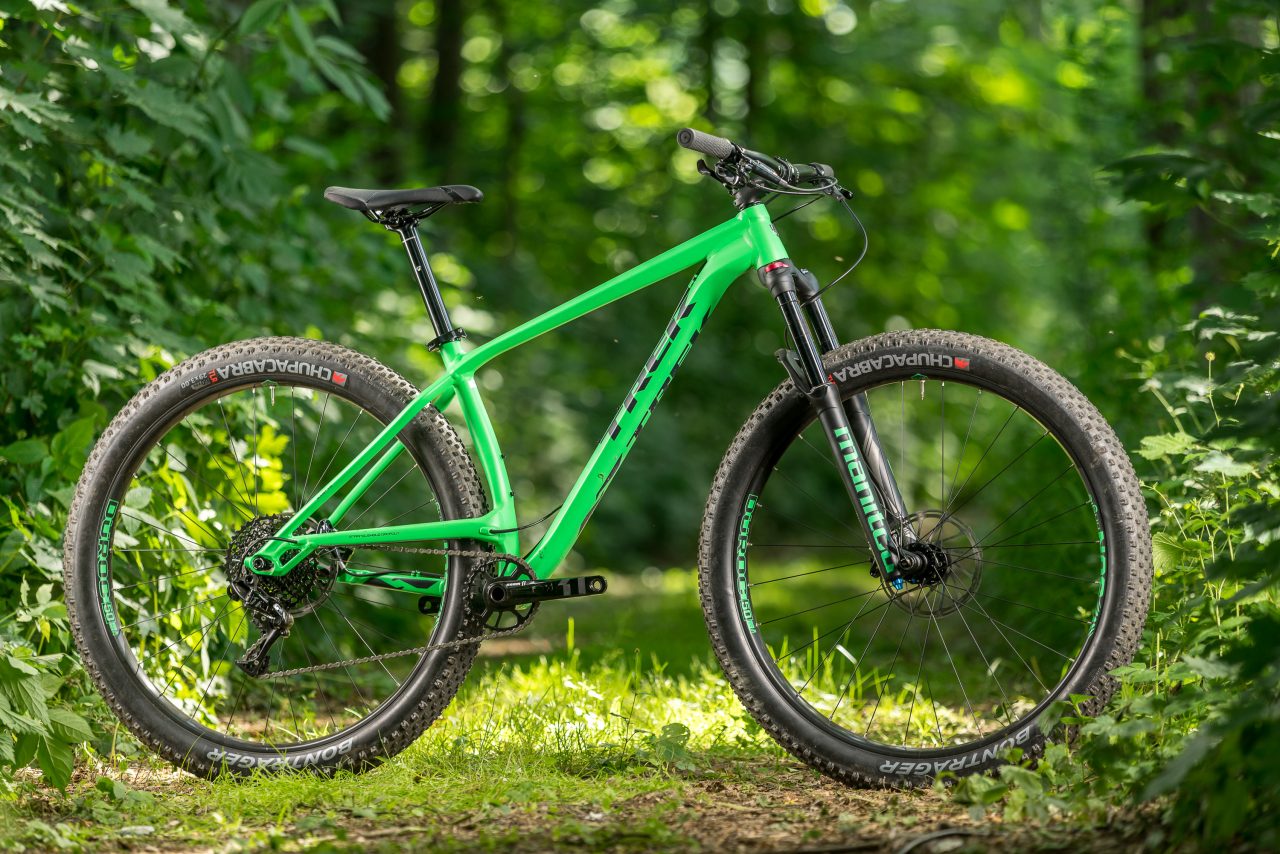
But don’t write the Stache off as a big steamroller, because it’s a lot more fun and agile than that. Braking bumps, shallow rock gardens, roots and corrugations are all taken care of with very minimal strain on the rider and almost no loss of rolling speed whatsoever. There’s no denying that the 29+ wheel size is by far the most comfortable ride of all the wheel size options - and trail momentum is not affected at all by obstacles, especially when teamed up with the 68.4 degree headangle and 130mm fork up front. You could easily make that three words by adding a popular curse word as an adjective in the middle and you probably still wouldn’t do the Stache justice.
Trek stache 7 review full#
It’s worth noting that the out of the box weight of my 18.5” Stache was 14.1kg, but I managed to pull 700g out of that simply by going tubeless! Those 29+ tubes ain’t light, get ‘em out of there! A full Bontrager alloy cockpit takes care of the steering and their Evoke 2 saddle provides the seating. Bontrager hubs laced to Sun Ringle 50mm Duroc rims get everything rolling and the Bontrager Chupacabra 3.0” tyres set up tubeless on them quite easily. The drivetrain is SRAM’s GX 11-speed which has already proven itself to be reliable, but the new Level T brakes were a first for me having only ridden the higher end Levels so far this year. Spec wise the Stache seemed super solid out of the box. They do feature a new take on the thru-axle which initially I found extremely annoying as I could never seem to get the wheel in or out in under two minutes, but once you get your head around it, it’s actually pretty simple and fast. It had been many years since I had ridden a Manitou fork and the last time left me pretty underwhelmed, so I was curious to see how far they’d come. Adjustable dropouts allow for single speed setup or if you just wanted to play with chainstay length you could get this thing as short as 410mm before the tyre got a bit close to the seat tube.īeing an industry super-power Trek were also able to get suspension manufacturers on board for the Stache project and the 7 features the new Manitou Magnum 34 with 130mm of travel and more than enough clearance for the 3.0 rubber, even if you get them caked in mud. An elevated drive side chainstay that allows for maximum frame stiffness and strength, while allowing just about the shortest rear end we’ve ever seen on a test bike, regardless of wheelsize, at 420mm. The Stache features Trek’s patented Mid-stay. Some, like the Santa Cruz Heckler, are still around today.

Cast your mind back (if you remember such things) to the 1990s and the myriad of elevated-chainstay bikes available.
Trek stache 7 review plus#
One problem that Plus bikes, and mountain bikes in general, have struggled with is the question: “How do we keep the rear end super short, but still have room for tyre, frame and chain ring all in that compact little zone around the drive side bottom bracket?” The removal of allowances for front derailleurs on many bikes over the last couple of seasons has helped - but clearances always walk a fine line with Plus bikes. The 29x3.0” rubber is the first thing that will grab the attention of riders and passers-by alike, but there are some very interesting details in this thing that you may not have ever seen before in a bike.

The Stache is an interesting looking beast. We got our hands on the mid-spec alloy Stache 7 and got busy finding out how they went. With their Stache models, Trek aim to redefine the 29+ genre with a range of bikes that are super comfortable and roll extremely well - but handle like a trail bike should and don’t weigh a tonne. The options have remained slim since then however, mostly due to the lack of suspension fork options, and 29+ has been the domain of the bikepacker who had very little need for a light, nimble bike as long as it could roll through hell and back. In truth the 29+ category predates the rise of other Plus bikes by some years, first being brought to life by Surly in 2012 with their Krampus.

Words: Adam Macbeth Photos: Tim Bardsley-Smith


 0 kommentar(er)
0 kommentar(er)
